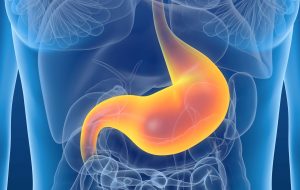Incorporating the right foods into your diet can play a crucial role in achieving your weight loss goals. These foods are not only low in calories but also packed with essential nutrients that can help boost metabolism and promote fat loss. Eating healthily doesn’t have to be a chore. Think of it as a delightful exploration of flavors and textures that also happens to support your health goals. Below, we dive deeper into the foods that can help you combat obesity, offering practical tips on how to incorporate them into your daily meals.
Fruits and Vegetables
When it comes to weight loss, fruits and vegetables are your best friends. Packed with fiber, vitamins, and minerals, they are low in calories yet filling, which is fantastic for managing hunger and reducing overconsumption.
Colorful Choices for Nutrient Diversity
Variety is the spice of life—and your diet. Incorporate a rainbow of fruits and vegetables to ensure a wide range of nutrients. For example:
- Berries: Blueberries, strawberries, and raspberries are delicious and high in antioxidants. They’re perfect in a smoothie or as a snack.
- Leafy Greens: Spinach, kale, and Swiss chard can be used in salads, soups, or smoothies.
- Bell Peppers: Available in red, yellow, and green, they add color and vitamin C to your dishes.
- Sweet Potatoes: A great source of beta-carotene and fiber, they can be baked or mashed as a side dish.
Practical Tips
- Snack Prep: Keep pre-cut veggie sticks like carrots and celery in the fridge for a quick snack.
- Salads: Make your salads more interesting by adding fruits like apple slices or mandarin segments.
- Batch Cooking: Prepare large batches of vegetable soup to freeze for easy, healthy meals.
Expanding Your Vegetable Palette
Don’t shy away from less common vegetables. Experimenting can unveil new favorites that spice up your meals:
- Rutabaga and Turnips: These root vegetables are low in calories and can be roasted or mashed.
- Fennel: Adds a subtle licorice flavor and crunch to salads.
- Beetroot: High in folate and manganese, beets can be roasted, grated into salads, or blended into smoothies.
Whole Grains
Whole grains are a must in a diet aimed at fighting obesity. They are rich in fiber and complex carbohydrates, which help regulate blood sugar levels and keep you full longer.
Grains to Include
- Brown Rice: A versatile base for stir-fries and bowls.
- Quinoa: Contains all nine essential amino acids, making it a complete protein. Ideal for salads or as a side.
- Oats: Perfect for breakfast, they can be used in overnight oats or porridge.
- Barley and Bulgur: Excellent for adding texture to soups and stews.
Practical Tips
- Switch It Up: Replace white rice with brown rice or quinoa in your meals.
- Breakfast Boost: Add a handful of oats to your morning smoothie for extra fiber.
- Batch Cooking: Cook a large pot of whole grains and store in the fridge for quick meal additions.
Exploring Ancient Grains
Beyond the typical whole grains, consider these ancient grains for added variety:
- Farro: A chewy, nutty grain that adds texture to salads.
- Amaranth: Packed with protein and fiber, it can be used in porridge or as a side dish.
- Teff: A tiny grain rich in iron and calcium, often used in Ethiopian cuisine.
Lean Protein Sources
Protein is essential for muscle repair and growth, and it also increases satiety, helping to reduce overall calorie consumption. Lean proteins are particularly beneficial as they provide these benefits without excessive fat.
Types of Lean Protein
- Skinless Poultry: Chicken and turkey are versatile and can be grilled, baked, or sautéed.
- Fish: Salmon and tuna are excellent sources of omega-3 fatty acids.
- Tofu and Tempeh: Great plant-based options for vegetarians.
- Legumes: Lentils, chickpeas, and beans are high in protein and fiber.
Practical Tips
- Meal Prep: Grill a batch of chicken breasts to use throughout the week in salads and wraps.
- Fish Fridays: Dedicate one day a week to having fish for dinner.
- Plant-Based Days: Incorporate a vegetarian meal using tofu or legumes once a week.
Diversifying Protein Sources
Consider trying these proteins to keep your meals exciting and nutritious:
- Bison: Lower in fat than beef and a good source of B vitamins.
- Edamame: Young soybeans that are great as a snack or in salads.
- Seitan: A wheat-based protein that’s very versatile for those following a plant-based diet.
Healthy Fats
Not all fats are created equal. Healthy fats are crucial for brain function, hormone production, and maintaining overall health. They also help keep you satisfied, preventing cravings for unhealthy snacks.
Sources of Healthy Fats
- Avocado: Perfect for spreading on toast or slicing into salads.
- Nuts: Almonds, walnuts, and pistachios make great snacks or salad toppings.
- Seeds: Chia seeds and flaxseeds can be added to smoothies or yogurt.
- Olive Oil: A staple for cooking and salad dressings.
Practical Tips
- Smart Snacking: Keep a small portion of nuts handy for a nutritious snack.
- Dress It Up: Make your own salad dressing with olive oil, lemon juice, and herbs.
- Smoothie Boost: Add a tablespoon of flaxseeds to your morning smoothie for added omega-3s.
Exploring More Sources of Healthy Fats
Expand your healthy fat repertoire with these options:
- Coconut Oil: Suitable for high-heat cooking and adds a tropical flavor to dishes.
- Hemp Seeds: Contain a perfect balance of omega-3 and omega-6 fatty acids.
- Algae Oil: A plant-based source of DHA omega-3, ideal for vegetarians and vegans.
Probiotic-Rich Foods
The gut microbiome plays a significant role in weight regulation and metabolic health. Probiotic-rich foods support a healthy gut, making them a valuable addition to your diet.
Probiotic Foods to Try
- Yogurt and Kefir: Choose varieties with live cultures.
- Fermented Vegetables: Kimchi and sauerkraut add a tangy crunch to meals.
- Tempeh and Miso: These fermented soy products are great for adding depth to dishes.
Practical Tips
- Breakfast Boost: Top your morning yogurt with berries and a sprinkle of granola.
- Fermented Fun: Add kimchi to stir-fries or as a side dish.
- Soups and Stews: Stir in miso paste for a savory umami flavor.
Expanding Probiotic Options
Consider these lesser-known probiotic foods to diversify your diet:
- Natto: A Japanese fermented soybean dish high in protein and vitamin K2.
- Kvass: A fermented beverage made from rye bread or beets.
- Kombucha: A fermented tea that offers a refreshing, tangy drink option.
Hydration and Its Role in Weight Management
While not a food, water plays a pivotal role in weight management. Often, we confuse thirst with hunger, leading to unnecessary snacking.
Tips for Staying Hydrated
- Water First: Drink a glass of water before meals to help control hunger.
- Infused Water: Add slices of cucumber or lemon to your water for flavor.
- Track Intake: Use a water bottle with measurements to ensure you’re getting enough.
Beyond Plain Water
Enhance your hydration with these creative options:
- Herbal Teas: Enjoy hot or cold, with varieties like peppermint or chamomile providing soothing flavors.
- Coconut Water: A natural source of electrolytes, great for post-workout hydration.
- Water-Rich Foods: Include cucumbers, watermelon, and strawberries in your diet.
Common Mistakes and How to Avoid Them
Even with the best intentions, there are common pitfalls people encounter when trying to lose weight.
Mistakes to Watch For
- Skipping Meals: Leads to overeating later. Instead, have regular, balanced meals.
- Overeating Healthy Foods: Nuts and avocados are healthy but calorie-dense. Practice portion control.
- Ignoring Liquid Calories: Beverages like sugary coffee drinks can add up. Opt for water or herbal teas.
Practical Tips
- Routine: Set regular meal times to avoid grazing.
- Mindful Eating: Pay attention to hunger cues and savor your meals.
- Read Labels: Be aware of hidden sugars in drinks and snacks.
Additional Pitfalls and Solutions
- All-or-Nothing Mindset: Allow for flexibility and occasional treats to prevent feelings of deprivation.
- Underestimating Portions: Use smaller plates or bowls to help control serving sizes.
- Stress Eating: Develop stress-management techniques like exercise or meditation to avoid emotional eating.
Bringing It All Together: A Sample Day of Meals
To help visualize how these foods can fit into a daily routine, here’s a sample day:
- Breakfast: Overnight oats with blueberries and a dollop of yogurt.
- Lunch: Quinoa salad with mixed greens, cherry tomatoes, cucumber, and grilled chicken, drizzled with olive oil dressing.
- Snack: A handful of almonds and an apple.
- Dinner: Baked salmon with a side of sweet potato and steamed broccoli.
- Evening Snack: A small bowl of yogurt with chia seeds and a few strawberries.
Expanding Your Meal Plan
Consider varying your meals with these ideas:
- Breakfast Variation: Scrambled eggs with spinach and whole-grain toast.
- Lunch Alternative: A wrap with turkey, avocado, lettuce, and a side of carrot sticks.
- Dinner Twist: Stir-fried tofu with mixed vegetables and brown rice.
By focusing on whole, nutrient-dense foods and avoiding common pitfalls, you can manage your weight more effectively while enjoying a variety of delicious meals. Remember, the key to success is consistency and balance in your diet.



